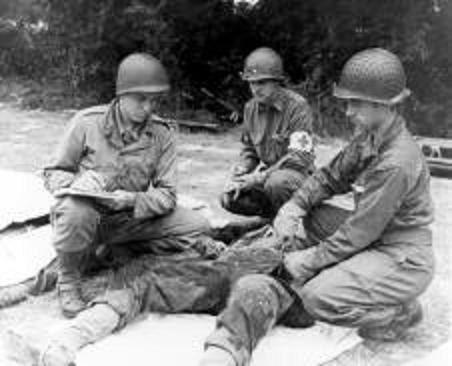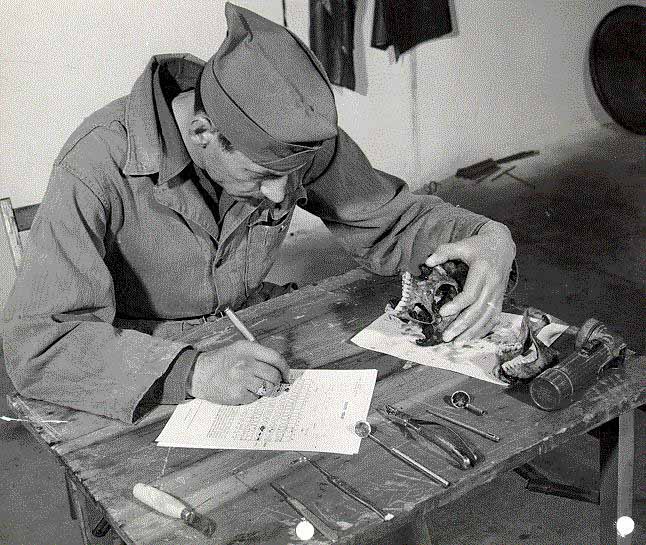WWII Grave Registration
During WWII the Grave Registration Units had to see to it that soldiers who were killed were identified and buried. Personal possessions were carefully cataloged and returned to their loved ones back in the States. These men often had to work close to the front-troops. This section of the website will try to give you a better understanding about the work the men of the Graves Registration Units did during WWII.
Leaders had to be experienced in civil engineering and topographical drafting to enable tehm to locate and lay out cemeteries. The remainder of the personnel are trained to supervise the collection and burial. The company did not have sufficient labor or personnel to dig graves or transport the dead. This work was performed by quartermaster service and truck units. The burial was registered on a report of interment and sent through channels to the Quatermaster General.

"Organization and personnel (click to enlarge)"
The Quartermaster graves registration company was the principal unit performing the function of supervising the burial of the dead, of recording and marking graves, collecting, receipting for and disposing of the personal effects of deceased soldiers.
Under combat conditions the Graves Registration Company was ordinarly broken up into it's four platoons. Each one of three platoons then served a combat division. The fourth served the corps troops and assisted the other platoons. A further break-down into sections operating with combat teams was possible.
As soon as a battlefield was free from extreme danger, the operating units entered and picked up the men who had been pronounced dead, and so tagged by the Medical Corps. The bodies were then moved to cemeteries designated by the division commander. Because of the imminence of diseases or in order to maintain morale of the troops, hasty burials were often necessary. In that case the leader would make a sketch so the location of grave could be determined after the cessation of hostilities.

A Graves Registration Unit at work.
Every effort was made to identify the dead. If identification tags were attached, the problem was comparatively simple; otherwise it was necessary to determine the identity from such clues as letters, dental work, fingerprints and perhaps even the proces of elimination, if the body was badly mutilated.

Every effort was made to identify the dead.
In the "Stripping Line" grenades and ammunition were removed with great care. In the field the men had to be extra carefull, because booby-traps were sometimes placed under the bodies of the dead soldiers. Personal effects were removed just before burial, placed in a bag or a handkerchief, and tagged with the soldier's name. An inventory of the property was made and sent with the property to Headquarters, Graves Registration Service.

Personal effects being checked at a collection point.
The Graves Registration Company was responsible for the respectful burial of the dead. For this purpose, the service of a chaplain could be obtained. Please look at the next image to have a better understanding of the Grave Registration Unit's work.

"Operations of the Battlefield (click to enlarge)"
| Special thanks to the following
persons for their assistance: |
| Mr. Tim O'Gorman - Director, U.S. Army Quartermaster Museum; |
| Dr. Steve Anders - Quartermaster Command Historian. |